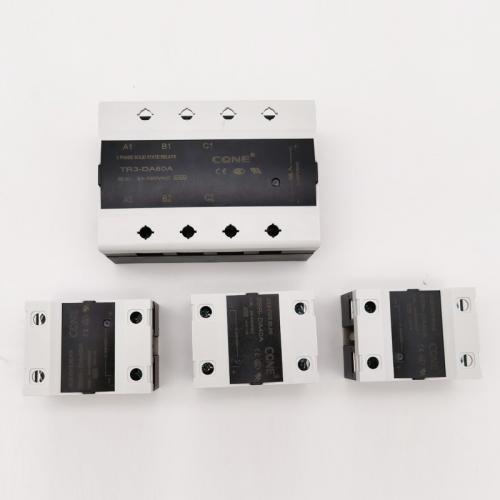News
Products
SCR Three-phase power regulator is a panel-mounted power regulating unit
Three-phase power regulator is a panel-mounted power regulating unit, which uses thyristor and its trigger control circuit to regulate load power. Thyristors play an important role in electronic equipment. They are widely used in various production departments and are becoming indispensable components in automation.


Three-phase power regulator uses digital circuit to trigger power regulator to realize voltage regulation and power regulation. Voltage regulation adopts phase-shifting control mode, and power regulation has two modes: fixed cycle power regulation and variable cycle power regulation. The control board is equipped with a phase-locked loop synchronous circuit, which can automatically identify the phase loss, phase loss protection, power-on slow start, slow shutdown, radiator over-temperature detection, constant current output, current limit, over-current protection, serial operation status indication and other functions. There are two ways to trigger the control board: directly trigger the power regulation module and trigger the phase-shift solid-state relay.
Three-phase power regulator is composed of trigger plate, special radiator, fan and shell. The core part adopts control board and power regulation module or flat power regulation element and operation panel with communication function; The cooling system adopts cooling low-noise fan. The whole machine has all the functions of the control panel. The current capacity of the whole machine varies from 25A to 3000A.


Three-phase power regulator
Three-phase power regulator is used with intelligent PID regulator or PLC; It is mainly used for heating control of industrial electric furnace, soft start and energy-saving operation control of large fans and pumps. The load type can be three-phase resistive load, three-phase inductive load and three-phase transformer load; Three-phase load can be center grounded load, center ungrounded load, inner triangle load and outer triangle load.
The phase-shift control method of three-phase power regulator is to change the conduction angle of the power regulator. Compared with the zero-crossing control mode, it is continuous control, which can control the primary and secondary of the transformer. At the same time, the feedback mode can be selected according to the load characteristics. Only the distortion of the output waveform will cause interference to the power grid, which may affect some resistance devices.
The variable period zero-crossing control method of three-phase power regulator can also be used for switching control at the zero-crossing point of power supply. Compared with PWM mode, there is no constant control cycle, but the shorter the control cycle is, the better, and the cycle is evenly distributed according to the output percentage in the control cycle. The device is also full wave without half wave component, which can achieve higher power factor, save power, and have no harmonic interference. The single output ammeter has jitter state.
Three-phase power regulator uses digital circuit to trigger power regulator to realize voltage regulation and power regulation. Voltage regulation adopts phase-shifting control mode, and power regulation has two modes: fixed cycle power regulation and variable cycle power regulation. The control board has the features of phase-locked loop synchronization circuit, automatic phase identification, phase loss protection, power-on slow start, slow shutdown, radiator over-temperature detection, constant current output, current limit, over-current protection, serial working status indication, etc.
Relevant
- What is the working principle of three-phase thyristor SCR power regulator2023-02-14
- SCR power regulators adopts the original imported Siemens thyristor from Germany2023-02-14
- SCR Power regulator is also used in various industries as an energy saving2023-02-17
- The fuse of the power regulator is easy to burn. What are the specific reasons?2023-02-17
- Notes on how to select scr power regulator!2023-02-17
- Which control temperature is accurate, scr power regulator or solid state relay2023-11-22
- What is the function of SCR power regulator?2023-11-22
Please enter search keywords
Enter






